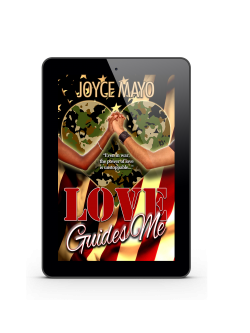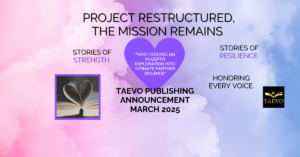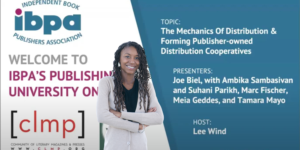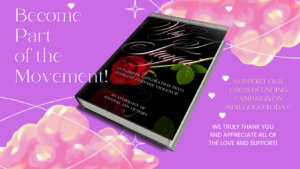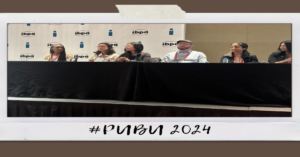In order to succeed in publishing, one of the most important tips one can offer is to not go into it with unrealistic expectations. That is one of the most common – and costly – mistakes that beginning authors make.
The best way to avoid this is to always do your research and read up on books from those who either work in the publishing industry, or have experienced success in publishing. You can see a list of great books here and collectively each of them reference the 10 most common misconceptions people tend to have about publishing.
Misconception #1: You’re more credible as an author if you have a publisher behind you.
This couldn’t be further from the truth, especially now that the publishing industry is just as influenced by capitalism as any other industry. The sad thing nowadays is that credibility is foolishly based on book sales, which is one of the major reasons the quality of books has plummeted and why many publishers are selecting authors based on how big their platform is and not how impressive their writing is.
Being signed to a publishing company doesn’t make you more of an “author” than the person who is self-published. It only means you are in a different type of publishing situation than a self-published author.
Being talented as a writer gains you credibility. Readers want to know that you can offer them useful information, or that you can spin an amazing tale that momentarily takes them out of their current world.
Misconception #2: eBook publishing isn’t REAL publishing.
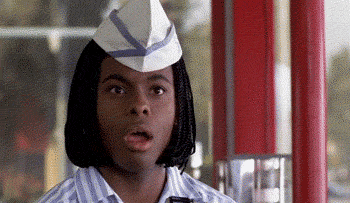
For some reason, when people hear the word “publish” they immediately think of a page with ink, or some kind of printed work. So to shatter that illusion, let’s look at the first official definition of “to publish” as provided by Dictionary.com:
“to issue (printed or otherwise reproduced textual or graphic material, computer software, etc.) for sale or distribution to the public.”
Notice how that definition included the terms “graphic material, computer software, etc.”? The craft of publishing actually falls under a wide range of mediums, and eBooks are just one of the many ways we can “issue printed or otherwise reproduced {works}”.
Print publishing isn’t the definition of being published, so if you want to expand your audience and stay current with the changing culture of how books are read, it would be best for you to let go of the belief that being published means having a printed book.
Misconception #3: The publisher does all of the work.
We discuss the shift in the publishing model over the past decade in another article, but this misconception directly references that shift. Authors who have not properly done their research on what the current publishing world looks like, and instead base their expectations on something they heard or read ten years ago, are the ones who are commonly disappointed when they find out the truth about #3.
The reality is this: the publisher does NOT do all of the work. However, we do have a hard-working and capable team to help us do MOST of the work. Not even the big publishing companies do everything for the author. To be brutally honest, in many cases they don’t even do half the work that smaller, indie traditional publishers do – they are big enough to expect the author to shoulder it. Feel free to read some of the blogs and comments on LinkedIn and Facebook.
These authors will tell you the truth: publishers want you to build your own platform, get out there and perform a lot of the marketing and promotional work and create buzz around your book. And they want you to use the author advance they give you to do it, because you won’t get paid any royalties from your book sales until that is paid back. (If you didn’t know that, there’s a lot we have to discuss pertaining to what that author advance check really means.)
The publishing model has shifted to one where publishers are having to deal with a loss of more profits due to declining book sales and rising print and marketing costs. Gone are the days when the publisher surrounds you with a “glam squad” for your book, showers thousands of marketing and promotional dollars on you, sets up book tours and in-store signings, and books you for morning talk shows. Sorry, but you missed that train by about 40 years.
Misconception #4: The author does all of the work.
As much as we’ve harped on the changing publishing model in the prior example, please don’t get the wrong idea about what the actual picture of the publisher-author relationship looks like. In reality, it’s more of a 50-50 deal, with the publisher saying, “I’m willing to invest the money behind the book required to get it manufactured, provide you with funding to market and promote the book, and work to get it stocked in book stores. In exchange, you put in some of the footwork to help push more sales.”
And they’re right to a certain extent. Honestly, no one can sell your product better than you can. No matter how much money anyone else has, you’ll always be your best salesperson.
An author may find themselves frustrated with their publisher and feel like they’ve gotten lost among the gaggle of other authors signed with that publishing company, especially as they update their social media or try to plot new ways to market their book.
Remember this: the most expensive part of getting your book done was handled by your publisher. The manufacturing and production of a book can cost a publishing company thousands of dollars, and they don’t even know if it will sell! They want to see you do your part when the book debuts, as well.
So if you’re not excited about selling your book and are just sitting around waiting for them to do it all, then don’t be surprised if you find your book back-listed or taken out of production sooner than you expected.
Misconception #5: If you get signed to a publisher, they are the publisher for ALL of your books.
This one just comes from a sheer lack of research and refusal to read the publishing contract, which will clearly outline what works the publisher is agreeing to… usually in the first paragraph.
When you sign with a publisher, they are not responsible for any other contracts you’ve signed prior to them. If you published a prior book with Publisher A and are now publishing your second book with Publisher B, then Publisher B has nothing to do with the book you have out with Publisher A. That is why it’s not a good idea to enter into multiple publishing contracts with different publishers.
Most of them actually have a clause in the contract that bars you from signing a deal with another publisher until your current contract has expired. Of course, exceptions apply (like if you’re writing under an entirely different genre and are using a pseudonym) but when you’re dealing with different books contracted to different publishers – especially if you’re trying to write a sequel – it gets very confusing. That’s why we recommend that you get a literary agent. They are able to navigate contract negotiations – especially when your book selling – much better than you may be able to.
Honestly, publishers may not even touch you if they know you’ve got another contract out there. We actually made that mistake with an author that was once signed to Taevo. They failed to disclose that they had another publishing contract out there. Had they done so, we definitely would not have them. Why?
Because about two months into our working on their book, they pulled our attention away from the project momentarily by telling us about the prequel, the rights of which were apparently owned by another publisher.
This author kept calling and asking us if we could send this other publisher “cease and desist” letters to tell them to take the book out of print. We had to explain to this author on several occasions that we couldn’t because our company had no authority over prior contracts they’d signed, and that their contract with us was specifically for the book we were working on.
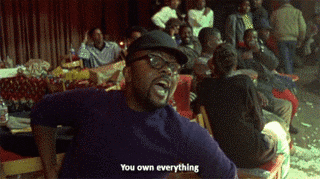
So remember this: a publishing contract is a binding agreement between you and the publisher agreeing to take on your book, and is strictly between you and them. Another publishing company has no say in it.
Misconception #6: In order to be considered an author you must have a published book in print.
This echoes misconception #2. Many people have said, “I write, but I’m not an author. I’m not published or anything.”
The definition of an author isn’t “a writer who is published”, despite what you may believe, and it isn’t what separates a writer from an author. So let’s do what we love and look at the official definition of an author per Dictionary.com:
Noun: “a writer of a book, article, or report.”
It doesn’t say anything about having a published work, whether in print or otherwise, right? So the writer that says to me, “I’m not an author” is highly mistaken. You are an author and that is why I refer to you all as authors, whether you have a published work out there or not. The aspiring author is one who wants to write but simply hasn’t yet. If you’re already writing, though, then you’re already an author.
However, having a published book does lend credibility to you as an expert, as well as to the message you are trying to send, so bear that in mind. It’s just that not having a published book doesn’t mean you can’t call yourself an author if you are currently writing.
Misconception #7: There is no need to edit your manuscript because the publisher will do it (and has staff to do it).
One of our staffers read a comment like this once on a LinkedIn message board and almost fell out of their seat in shock. They couldn’t believe this person (who hadn’t even managed to score a publishing deal yet) was advising other authors out there to send in unedited manuscripts to publishers! Maybe it was a strategic move and he was trying to eliminate competition. We just can’t figure why someone would say something so ludicrous with such confidence. That’s the equivalent of telling someone to show up to a job interview in a rumpled suit, but not to worry because the person interviewing you will simply iron it for you once you’re hired.
We dare you to send out an unedited manuscript to a publisher or literary agent and see if you get accepted. Better yet, don’t bother. You’ll just ruin your chance before you even get one and we don’t want to be responsible for precipitating something like that.
Publishers do have professional editors on staff, but their job is not to fix blatant typos. They are editing on another completely different level. They are fixing the content to make sure it flows, contains no plot holes or continuity errors, and that the content is acceptable for the market you are selling to. Believe it or not, there are standards your book has to pass if you’re publishing a children’s or Young Adult fiction book, as well as a commission called the Association of American Publishers (AAP) to review and approve – or reject – it.
So, before you send off your manuscript to a literary agent or publisher, please take the time to get it professionally edited. That kind of editor will actually clean up typos, correct punctuation and syntax errors, and other common mistakes that manuscripts contain.
Misconception #8: You cannot sell a book that was released over a year ago because it’s “too old” or “outdated”.
As hungry readers who still read books that were written decades ago, we’re still confused as to why some people make this statement. This is why we tell people to do real research on this industry, not just Google searches. Check out more than just industry trends; take the time to actually research the success of the books on a company’s backlist, mainly because you’ll see that’s where the real money is. Any publisher with an ounce of common sense knows this as well.
Publishing companies stay in business not because of their current releases (which costs a lot due to production and marketing fees), but because of the books on their backlists that they are able to find new ways to market and sell. Books that have already built up a loyal fan base and have proven to be consistent sellers are quite valuable to a publishing company’s continuing revenue. Sure, you may not see those books on the New York Times “Bestsellers List”, but you’ll notice those titles repeatedly circulated through newsletters, brochures, and mailers that advertise special deals on their prior releases.
And remember: just because the book came out two or three years ago doesn’t mean that it won’t still sell, especially if it’s a timeless topic. Our author Joyce Mayo’s books, “Abused and Abandoned” and its sequel, “Too Late To Turn Back” – two fictional stories chronically the real-life issues of teen violence – continue to sell because of the targeted subject matter, especially during October, which is Domestic Violence Awareness month. We’d be crazy to take those books down just because they were first published several years ago.
Misconception #9: Self-publishing is “easy”.
If it was so easy, everyone would be doing it… but they’re not. We know this from our interactions with authors. Many have told us that they tried to publish their book on their own, but failed miserably because they had no idea what they were supposed to be doing.
The problem nowadays is that we’re getting too many of those spam emails from people who just want to make a lot of money by conning you into buying their webinars/courses/crappy eBooks, so they’ll swear up and down that they know the secret formula to writing and publishing your book in 30 days, and all you have to do is pay (insert dollar amount here) and you’ll make a million dollars on your first book.
Can we be frank for a minute? (We’re imagining you saying, “Sure, Frank… go ahead!”) Here at Taevo, we don’t like those people. We don’t like them even a little bit.
[activate “Dr. Seuss Mode”]
We do not like them over here,
We do not like the far or near,
We do not like them over there.
We do not like them anywhere.
[end “Dr. Seuss Mode”]
Several of us can attest to still receiving their emails, and we would wish that we could send them a virus that would cripple them from ever sending out such rubbish again. They are a cancer to the writing and publishing world.
Self-publishing is not easy, nor is writing. Even those of us who do it for a living and consider ourselves fairly talented at it will tell you how hard it is. You can’t do it in 30 days and expect to produce something good.
Your book is your baby. Can you produce a healthy baby in 30 days? No. That’s why we tell people to at least give the writing/publishing process at least 9 months. We’ve been doing this for over fifteen years and still find myself learning new things or facing a new challenge daily.
We understand that people are anxious to get their work out there as soon as possible, but trust us on this: what you create really does get better with age. We had to learn that the hard way.
Just read some of my earlier blogs. Those were blogs that were just fired off in 20 minutes or so, then posted on the site without looking them over a few times. Some of them eventually had to be taken down because they didn’t meet our quality standards.
The point is that nothing worth doing comes easy. If you want it bad enough, don’t sell yourself short and try to take the easy way out. You’ll just regret it when you look at the final product, and you’ll wind up shelling out more money to fix it.
Misconception #10: It can be done for under $500.
It can’t. Sorry to be so blunt, but we’re tired of having to fight this gross misconception. We love books, we truly do… but nothing annoys us more than a poorly put-together book that falls apart in my hands. W also don’t like cheap-looking books where we can tell they were poorly produced.
Who are these people who keep saying that you can produce a high-quality print book for under $500? What print company are they using? Is it some decrepit building buried deep in the bowels of some crumbling manufacturing area of the city? We’re dying to know because every quality printer we find gives us quotes that start higher than $500… and that’s not even for a small print run.
When you factor in all of the main costs associated with producing a print book: editing, typesetting, book cover design, supplies, printing, binding, shipping, storing, etc. you’re starting to get into costs that range in the thousands.
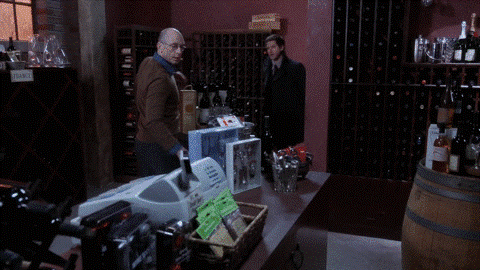
You can always find a print-on-demand or vanity publisher to do it for you, but that goes to the heart of this particular misconception: the author that wants to produce a print for less than $500 is refusing to invest in themselves, and that’s what you must realize when you come into this arena: you aren’t spending money on a book, you’re investing in a message that you want to spread to the world, and the book is simply there to enhance in the broadening of that message.
The purpose of the book isn’t to make you rich, and it to be completely honest, it probably won’t. So if you are writing a book to try and become rich and famous, you may want to rethink your career path. Writing (and publishing) is often a thankless profession, and those who are truly passionate about this hang in there for the long haul and want to help others find success.
Lucky for you, most of us here have worked passionately in many thankless professions, and out of all of them, working with books is the one we’ve always loved the most. We definitely can’t see ourselves giving it up, because the thanks we get out of our hard work is seeing all of your books posted on Amazon, Barnes & Noble, Kobo, Smashwords, and other platforms.
Knowing what we know about the rising publishing costs for print books, it’s our passion to help authors find other avenues to get their message out to the world. That’s why we love eBook publishing and want to see more authors and publishers of color capitalize on it now while the costs are still relatively low. With eBooks, authors actually can have a high-quality book published for less than $500, leaving more money left over to dedicate to marketing the book.
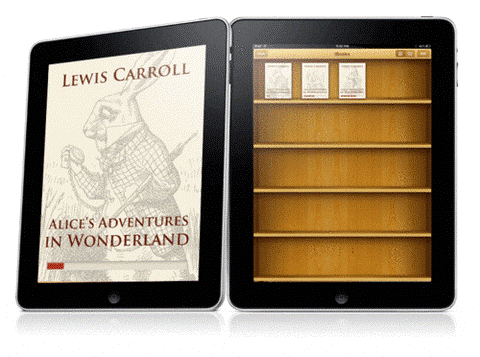
We hope that debunking some of these misconceptions helped you and made you want to research more about publishing before you jump out there “all willy-nilly and with no clothes on” as some of the elders used to say.
Ourdeepest desire is to bring you guys the stark truth about publishing your book: the good, the bad, and the ugly. We’re not like those other people who are just going to tell you what you want to hear so they can make a sale. Sometimes you may not like what we have to say, but we would rather deliver the brutal truth now and spare you from getting conned later on down the line.
In order to truly empower you and solve a lot of the problems we’ve been seeing in the publishing world, we have to always be 100 percent honest with you and willing to share everything that we know and continue to learn. And you have our word that we always will be, but you’ll have to do the same. We can only rebuild our publishing world together.
Do you have any common misconceptions about publishing you would like to share? Maybe something you’ve heard in passing, read in chat rooms, or just believed yourself for a while. Feel free to comment and share your thoughts on this. Don’t forget to share!
This post contains affiliate links, which means if you purchase through these links, you’re supporting Taevo World and our continued efforts to provide you with free tips and advice — and we thank you for your support!


![Too Late To Turn Back [EBOOK]](https://www.taevopublishing.com/wp-content/uploads/2020/11/2-1-250x333.png)
